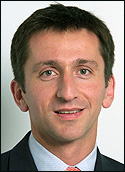NASA, the U.S. government’s space agency, will run a trial of a new access control system that could see 100,000 NASA employees and contractors using RFID to verify access to a number of NASA sites before the end of next year.
During the next three months, 2,000 NASA employees will use the technology to gain access to areas in the NASA Marshall Space Flight Center in Alabama. If the trial is successful and the U.S. Office of Management and Budget approves funding for the system, NASA will deploy more than 100,000 smart cards in 2005. The pilot follows initial testing of the technology at NASA.
The new system will be deployed by Maximus, a Reston, Va., a company that provides management systems and services to governmental agencies and departments. The system will use Philips Semiconductors’ MIFARE DESFire V0.6 contactless chips in both the smart cards and the access control readers. The manufacturer of the cards and readers, however, has yet to be announced.
NASA’s deployment will be the first in the world to use the United States government’s Government Smart Card Interoperability Specification (GSC-IS) standard. This specification is the foundation of the federal government’s effort to develop a ubiquitous smart card interoperability framework that enables large-scale deployment of smart card technology across federal agencies.
“Philips worked with the U.S. government to develop the GSC-IS standard, and we developed the MIFARE DESFire technology in parallel with that work,” says Christophe Duverne, vice president marketing and sales for Philips Semiconductors’ identification division.
Other government agencies, such as the U.S. Department of Interior, are also implementing physical access systems compliant with the GSC-IS. The GSC-IS standard defines the interaction between each application of access card and reader, such as encryption, in more detail than defined by ISO standards. By using the GSC-IS standard, different agencies will have the option to allow each other’s physical access cards to work in different secure areas, enhancing interagency collaboration.
Headquartered in Eindhoven, the Netherlands, Philips Semiconductors is hoping that NASA’s planned deployment will lead to further government deployments of its contactless access technology. “This is the largest U.S. and largest government contract we have had for this technology,” says Duverne.
Philips’s MIFARE DESFire technology operates at 13.56 MHz and also complies with the ISO 14443A contactless card standard. The card and readers deliver a read range of a couple of inches.
Details of how NASA will configure and operate its MIFARE installation have not been revealed, but the passive technology is usually configured so that a unique number stored on each smart card chip is transmitted to access point readers that are networked to a database. On reading the encrypted card number, the reader checks that number with that cardholders security access clearance; access at that door will be allowed or rejected accordingly.
According to Philips, contactless cards have two benefits over contact access cards: Personnel can use the contactless cards and gain access without having to take the cards out of their bags or wallets, and because there is no contact between card and reader, there is no wear and tear on the reader, reducing the need for reader maintenance.


